
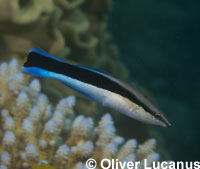 Cleaner wrasse (Labroides dimidiatus)
Cleaner wrasse (Labroides dimidiatus)
By Oliver LucanusQ. I recently acquired a cleaner wrasse for my 72-gallon saltwater aquarium. The cleaner wrasse is very active at cleaning the other fish, but seems reluctant to take any form of aquarium fish food. I have tried feeding the cleaner wrasse Mysis shrimp. In most cases the Mysis shrimp would go uneaten and end up stuck to the aquarium filter’s suction tube. When I consulted with the employees at my local fish store for more advice, they recommended brine shrimp. Sadly, the brine shrimp also ended up stuck to the aquarium filter’s suction tube. Do you have any thoughts as to what the little cleaner wrasse might eat?
Royce W.
Maryland
A. The cleaner wrasse (Labroides dimidiatus) does not make the best tenant for fish aquariums. While it is an active cleaner, (easily out-cleaning shrimp) its specialized dietary requirements make it unsuitable for life in the confines of a fish aquarium. The only scenarios I am aware of where the cleaner wrasse has survived long term in captivity is in cases where large public aquariums utilize them to clean larger fish. In a large fish aquarium (more than 100,000 gallons and full of fish) the cleaner wrasse can easily find enough parasites to nourish it, though in our much smaller home fish aquariums it becomes nearly impossible.
The cleaner wrasse, sometimes called the blue streak wrasse, is a very active fish that displays cleaning symbiosis with nearly any other fish species, even some as small as itself. When scuba diving we often observe the cleaner wrasse darting in and out of large groupers’ or moray eels’ mouths working to eat parasites off. The trade off is simple; the smaller wrasse gets a meal and the larger fish is groomed of annoying parasites. The cleaner wrasse relies on microscopic parasites to provide a large portion of its nutrition. As you can imagine, it takes a whole lot of tiny parasites to meet the nutritional requirements of a cleaner wrasse.
On the natural coral reef it’s realistic for the cleaner wrasse to serve hundreds of fish a day. Each of these fish is covered with dead skin and parasites, which offers the wrasse plenty to eat. In the aquarium, where there is only a handful of fish that may not be affected by parasites at all, the wrasse struggles to find something to eat. The normal outcome in this scenario is that the cleaner wrasse slowly grows thin and eventually perishes.
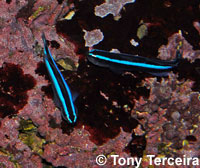 Neon gobies (Elacatinus oceanops)
Neon gobies (Elacatinus oceanops)
By Tony TerceiraThe Caribbean Sea offers another cleaner that is not only as effective at cleaning parasites off fish as the cleaner wrasse, but also adjusts well to home aquarium life. The tiny neon goby (Elacatinus oceanops) packs a punch in the cleaning department and also eats about any aquarium food offered. These little fish are common on Caribbean reefs and, like the cleaner wrasse, tend to be highly active when cleaning.
One thing to remember when purchasing a cleaner wrasse or neon goby is that it can present an ethical concern. Whenever a cleaner organism is removed from the coral reef it leaves a once-serviced area unattended. Studies have shown that in these cases some fish perish because they lack the cleaning services that they once had. When examining this theory one can’t help but wonder if it’s not better to keep our fish parasite-free via quarantine and careful introduction rather than relying on cleaner organisms to do it.
But, with all of this said, I have seen cases where the cleaner wrasse will accept Mysis shrimp, or some other form of frozen food that looks alive when in the water current. I would recommend trying CYCLOP-EEZE, as that’s a food source that even picky eaters like Mandarinfish (Pterosynchiropus splendidus) will sometimes accept.
Also, in addition to the feeding issues of the cleaner wrasse, they are great jumpers. I would recommend keeping the aquarium totally covered at all times. I have heard reports of these fish going missing from the aquarium only to be found days later halfway across the room.
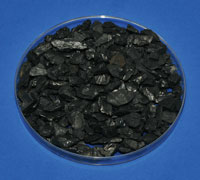 Aquarium Carbon
Whether it is for a small betta bowl, 6 million gallons
Aquarium Carbon
Whether it is for a small betta bowl, 6 million gallons
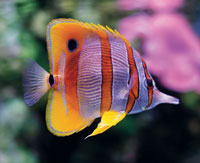 Aiptasia Anemone
Aiptasia Anemone
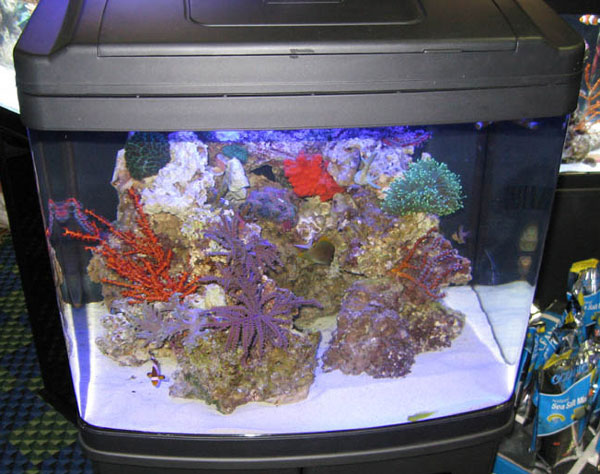 Marine Nano Tank Problems
Marine Nano Tank Problems
 Would You Like The Supreme Fishing Experience? Heres The Reason Why It Is Essential To Carry The Mo
If what youre seeking out is considerably more fish thr
Would You Like The Supreme Fishing Experience? Heres The Reason Why It Is Essential To Carry The Mo
If what youre seeking out is considerably more fish thr
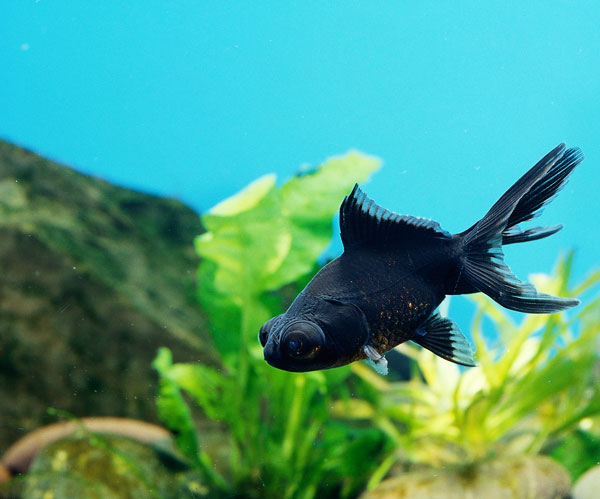 Fish and Fungus
Black Moor Q. I have two large black moor goldfish, one larg
Fish and Fungus
Black Moor Q. I have two large black moor goldfish, one larg
Copyright © 2005-2016 Pet Information All Rights Reserved
Contact us: www162date@outlook.com